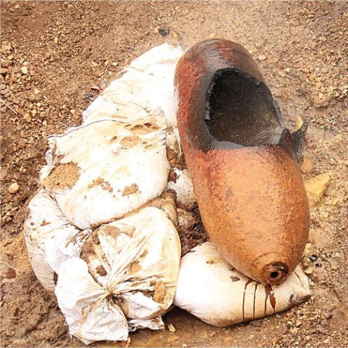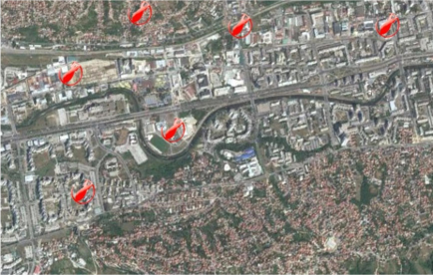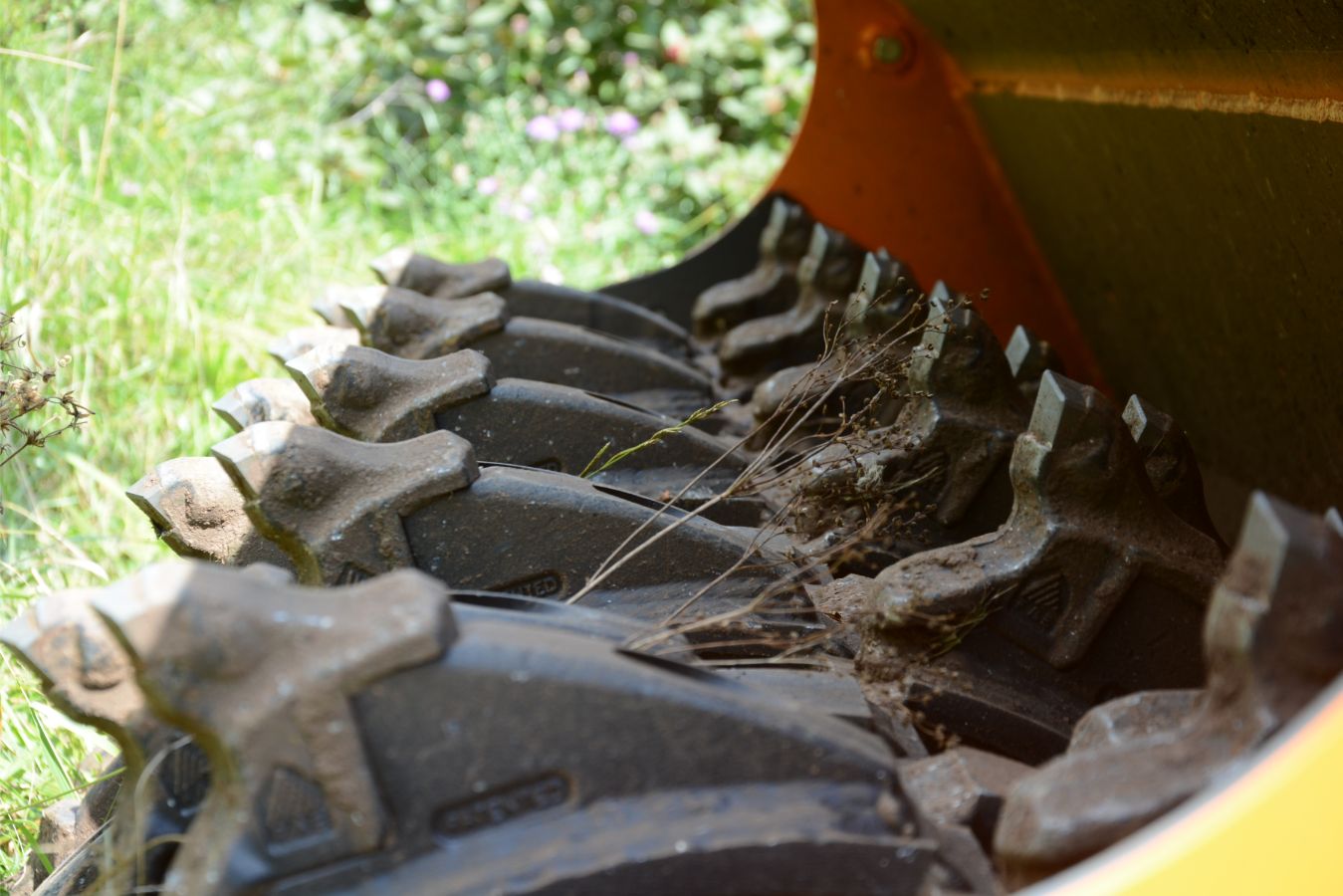Introduction
From 2007 to 2017 Federal Administration of Civil Protection has disposed of 50 heavy weight unexploded aircraft bombs (UXB). It is five times increasing as compared to the 1997-2007 period. That urged evaluation and identification2 of the risks related to this kind of the explosive remnants of war. In addition to that disposal procedures needed to be analyzed too and necessary improvements suggested.
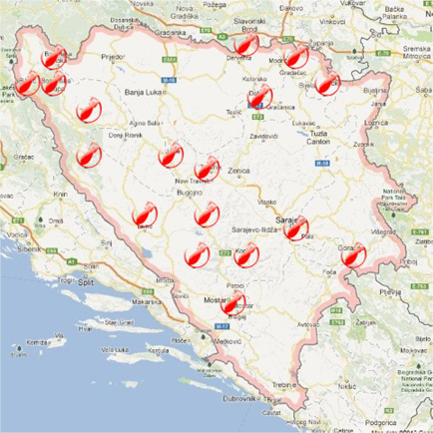
Image 1: Areas where UXBs have been found from 2007 to 2017
Location-contamination-activity
Excavations in construction engineering caused uncovering of the most unexploded aircraft bombs, thirty-three or 66%. All bombs in urban and suburban environment are found 0.4 to 6 meters deep. Five are found under the buildings or roads during demolition or reconstruction, and only two are excavated with manual tools. Agriculture led to four findings of which two on surfaces that have been previously processed. During mass tombs exhumations four bombs are found, during mine clearance one, outdoor activities two and during diving six bombs are found underwater. Only three bombs, two in uninhabited and one in rural environment are found on the ground. Upon field results excavations have been identified as the activities with the highest and demining with the lowest risk of finding an unexploded aircraft bombs.
Forty-four or 88% of found bombs are World War Two leftovers and 6 from War in Bosnia and Herzegovina 1992-1995. Most of the bombs from WW2 have been found in suburban (47%) and urban (30%) environment, while only one bomb from The War in Bosnia and Herzegovina 19921995 has been found in the suburb. As the criteria for the characterization of the environment population density and the development of the infrastructure within the bomb danger radius is taken. Out of thirtythree bombs found in urban and suburban environment ten were 500kg/1000lbs and fifteen 250kg/500lbs (78%). Thirty-two of those bombs were remnants of the WW2. One, which was brought and placed as a demo charge under the local road, remained after the War in Bosnia and Herzegovina. Two German bombs have been placed as the demo charges at the location where German airport use to be and one American was in the same manner by German forces placed on the bridge and found in the river under the bridge. Underwater findings are specific as bombs under the water are out of reach to the general population but it is necessary to mention that all of those are found in the parts of the watercourses through urban (3) and suburban (3) surrounding and all are WW2 remnants. This data place 78%, three quarters, of all unexploded aircraft bombs found from 2007 to 2017 in densely inhabited areas where possible consequences are very heavy and extensive safety procedures for the disposal must be applied. According to that absolutely highest risk from the unexploded aircraft bombs are in urban and suburban areas.
Image 2: Locations where UXBs have been found in Sarajevo from 2007 to 2017.
Historical analysis
Through analysis of the available sources of the aircraft bombs use in the Bosnia and Herzegovina it is determined that Axis bombs in the urban and suburban areas are left after so called April War- German and Italian attack on the Kingdom of Yugoslavia from 06 to 17 of April 1941. Inthose circumstances military installations were attacked and also cities Banja Luka, Bihać, Bijeljina, Jajce, Mostar, Prijedor, Sarajevo, Tuzla and Zenica3 were unselectively bombed. In rural and uninhabited areas Axis bombs are in highest number of cases anti-guerilla warfare leftovers.
Remaining Allied forces bombs have been found close to the locations which were targeted by the strategic and sometimes tactical aviation. All strategic targets were located in the areas which are today considered urban and suburban. Analyzing operational chronology4 and available historical sources5 related to the Allied bomber air force units’ engagements during World War Two, 98 attacks on 30 targets in 20 cities and settlements in Bosnia and Herzegovina are identified. Bosanski Brod had 13 strategic attacks (5 on marshalling yards, 2 on road bridge, 2 railroad bridge, 3 on oil refinery, 1 on city area), Sarajevo had 11 strategic and 4 tactical attacks (11 on marshalling yards and railroad facilities, 4 on airport), Banja Luka had 8 strategic (5 on airport, 3 on German barracks), Višegrad had 8 strategic (4 on bridges i 4 on troops), Mostar 7 strategic (6 on airport and 1 on German military installations), Bihać had 6 strategic and 3 tactical (3 on railroad station, 6 on barracks and troops), Zenica had 4 strategic and 6 tactical (8 on railroad bridge and 1 road bridge), Doboj had 4 strategic (railroad bridge), Prijedor had 2 strategic and 1 tactical (troops), Livno had 2 strategic (troops), Drvar, Bosanska Krupa, Bosanska Gradiška and Bosanski Novi respectively had 1 strategic (troops), Fojnica had 1 strategic (bridge), Prijedor had 1 strategic and 1 tactical (troops), Rogatica had 1 strategic (railroad), Travnik had 2 tactical (railroad), Konjic had 2 tactical (railroad station), Bosanska Otoka had 1 tactical (road bridge), Bijeljina and Busovača had 1 tactical (troops). In relation to the other available historical sources it is determined that all tactical aviation engagements reports have not been revealed6. Total amount of bombs dropped in tactical and strategic attacks have been estimated to 8-10 thousand short tons. Aside from bomber aviation also fighter-bomber aviation has been engaged mostly on road and railroad transports, airports and enemy troops in ground support roles. Those attacks were significantly smaller by amount of the bombs dropped and in reports are most often given wider areas of the engagements instead of the specific targets7.
Ordnance analysis
Only two uncovered UXB's needed to be blow in situ as danger from the uncontrolled explosion was unacceptably high due to their fuzes construction. Both were found in suburban area during excavations. Remainder of the bombs, except German, were fitted with impact/inertia action fuzes so removing the fuze and destruction on the demolition range were procedures applied in those situations. German bombs were fitted with lateral electrical impact fuzes and all were extracted from situ without removing the fuzes. On three found bombs fuze were already removed and on one fuze was broken off. Forty-nine bombs were high explosive demolition with contents weight ratio (CWR) from 30% to 50%. Incendiaries were not found even those were used by German Luftwaffe8. One was target practice bomb. Nine of ten 500 kg/1000 lbs bombs were British and one was German. Twelve of twenty-one 250kg/500 lbs bombs were American, six German and three were British. Bombs under 125 kg/250 lbs, in total nineteen, were German (6), Italian (5), Soviet (3), American (2), British (1), French (1), Yugoslav (1). Through analysis of the historical sources it is revealed that German Luftwaffe was using bombs up to 500 kg9, American up to 1000 kg10 (only in attacks on bridges in Zenica, Doboj and Brod) and British up to 2000 kg11 (in attacks on oil refinery in Brod and marshalling yards in Sarajevo). In available historic sources use of the chemical long delay fuzes is recorded in attacks on marshalling yards in Sarajevo, railroad bridge in Zenica, refinery in Brod and targets in Višegrad12. Data on bombs removed from 1945. to 1992. is missing thus preventing full analysis but with available pieces of information plausible risk and worst case scenario are identified. Plausible risk on identified targeted locations is finding of the 250-500 kg bomb, most probably American or British during excavations up to 5 meters deep. Worst case scenario means discovery of the 1000 – 2000 kg bomb in the urban area or bomb fitted with a chemical long delay fuze which requires demolition in situ and in the most extreme case it’s uncontrolled detonation on discovery or during disposal. Reason for this is exceptional sensitivity and unpredictability of the fuzes of this kind and possibility of the unpredicted detonation even without any manipulation. However, the worst case scenario is much less probable as so far this type of fuze is found on only one bomb.
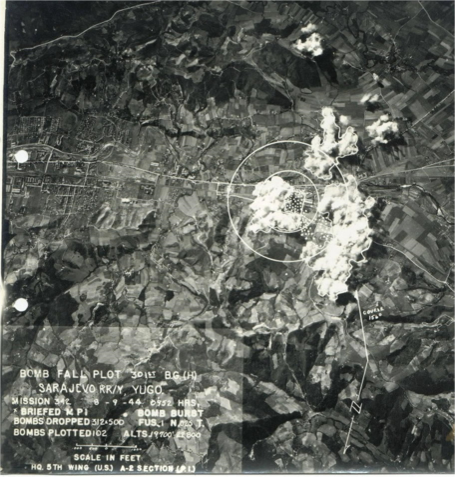
Image 3: Aerial photo of the marshaling yards Alipašin Most in Sarajevo bombing by 301st BG, 15th AF, USAAF on 09.08.1944.
Disposal protocols
In Federation of Bosnia and Herzegovina Federal Administration of Civil Protection (FACP) has exclusive jurisdiction over unexploded ordnance disposal for which purpose 8 explosive ordnance disposal (EOD) teams have been formed. Order of actions applied for the disposal of the single bomb is isolation, evacuation, neutralization, extraction, destruction, asanation. Isolation is the initial action taken by the first authorized person in situ, usually a police officer, and it means full access ban in the bomb's immediate surrounding. Upon FACP EOD team arrival positive identification of the item and also hazards and risks is undertaken and accordingly operational plan is made. According to the plan external services; local civil protection, paramedics, police, firefighters and Red Cross are being engaged as the logistic and operational support. Also responsible authorities are requested for complete traffic ban on endangered roads, railroads and waterways and for the establishing of the no flight zone over the risk area. According to the surrounding, planned rendering safe procedure and bomb mass evacuation is being carried out within the radius from 200 to 1000 meters. The biggest evacuation was undertaken in Bosanska Otoka when total displacement of the population within 1000 meters radius is done for the in situ demolition of the 250 kg bomb. Evacuation is the responsibility of the local community services and practically and logistically is the most demanding phase in the single bomb disposal process. For executing full obligatory evacuation it is needed, according to the existing laws, to declare state of the emergency within the bomb’s danger radius otherwise it is impossible to force residents to evacuate. Because of that in some local communities for a lower risk tasks residents are being given a choice whether to evacuate with obligatory movement ban within danger radius during the task execution. However in the worst case scenario, when immediate evacuation might be mandatory, current practice would not be sufficient and efficient enough. Neutralization is the rendering safe procedure. This means disassembling the fuzing mechanism from the bomb, usually by one of the dynamic tools (dearmer or rocket wrench) and rarely manually. In situations when fuzes are identified as an unarmed or when bomb is German with the electrical fuzes, bombs are transported with the fuzes. Extraction is the phase which comprehends loading, transporting, eventual temporary storing and unloading of the bomb. All UXB transports on public roads are done under the police escort between 0300 and 0500 hrs in the morning on the roads completely closed for all other traffic. Transport is done by two element convoy; first element transports the bomb and in second element, on the safe distance, medical and firefighting support team is moving along. When demolition in situ is required, extraction is not applied and for the destruction itself one of the low order methods are being used to eliminate shock wave, fragmentation, noise and seismic shock. It is usually done by shape charges and thermite incendiaries. These methods are also applied for the destructions on the demolition ranges in the controlled environment for the training purposes. In two cases when destruction in situ was required extensive protection works have been undertaken. In one of these cases 55000 sand bags containing 2200 cubic meters of sand were used for the protective barrier. Asanation is the process of the returning the location in original state after the destruction and is usually done as the joint effort of the FACP and the local community.
Image 4: British 1000lbs MkIV general purpose bomb destroyed on Lapov Dol range, July 2014.
Needed improvements
Currently in Bosnia and Herzegovina practice of obligatory area check for UXBs on identified risk locations does not exist. In addition, program of UXB awareness does not exist for neither endangered populations nor local civil protection professionals. Highly developed mine awareness program is mostly focused on mine risk areas and population threatened by that kind of hazard. For more complete risk management related to the UXBs and also other residual ERW contamination it would be advisable to extend mine risk education program to train at least local civil protection professionals. Trough that activity necessary prevention component in residual UXB management would be established13.
- EOD level 3+, Head of the EOD dpt., Federal Administration of Civil Protection, Bosnia and Herzegovina, This email address is being protected from spambots. You need JavaScript enabled to view it.
- GICHD Management of Residual Explosive Remnants of War (MORE) issue June 2015.
- Vojislav Mikić „Neprijateljeva avijacija u Jugoslaviji 1941-1945“, Vazduhoplovstvo u strategiji NOR-a, Vojnoizdavački novinski centar, Beograd, 1986.
- Richard G Davis, Bombing the European Axis Powers A Historical Digest of the Combined Bomber Offensive 1939–1945, Air University Press, Maxwell Air Force Base, Alabama 2006.
- Operational and intelligence reports from 2 , 98 , 301 ,376 , 449 , 450 , 454 , 484 Bomber Group (BG), 15 Air Force (AF) USAAF, and No. 25 and No.39 Bomber Squadron SAAF, No.254 Wing, Balkans Air Force.
- Zbornik dokumenta i podataka, Borbe u Bosni i Hercegovini 1944. god, tom IV, books from 21 to 39, Vojnoistoriski institut Jugoslovenske narodne armije, Beograd, 1960.
- Zbornik dokumenta i podataka, Jugoslovensko ratno vazduhoplovstvo, tom X, books 1 and 2, Vojnoistoriski institut Jugoslovenske narodne armije, Beograd, 1967.
- Daily report Fluggruppe Kroatien to XV Gebrigs Korps Wehrmacht dated 20.04.1944.
- Report of the commander of Zalužani airport to the Headquarters of the 5th Corps of the Yugoslav Peoples Liberation Army on captured air force material dated 26.09.1944.
- Operational reports: 455 BG, 15. AF dated 9.8.1944, 449. i 450. BG, 15 AF dated 23.11.1944
- Operational report: Bomber Squadron No.37, 231 Bomber Wing, 205 Bomber Group of Royal Air Force (RAF) dated 07.11.1944.
- Operational report: 98 BG, 15. AF dated 23.11.1944, 449 BG, 15 AF dated 20.11.1944, Daily report 205. Bomber Group RAF dated 08.07.1944 and 20.11.1944.
- GICHD, June 2015.


